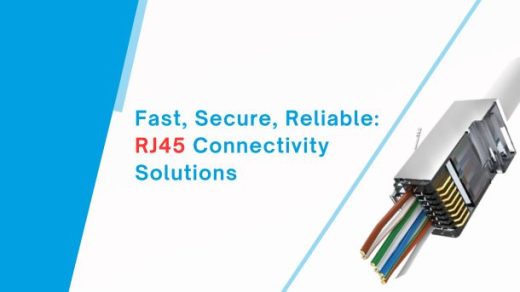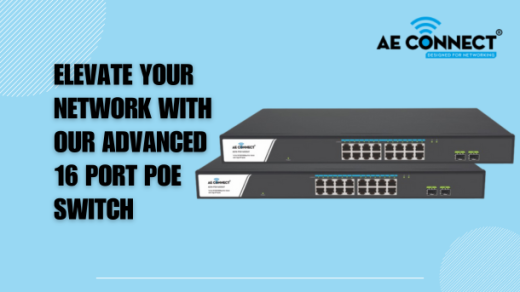In the current dynamic digital landscape, effective communication holds the utmost significance. Regardless of whether you are overseeing a modest business or handling a substantial enterprise, possessing a dependable and proficient network is imperative. This is precisely where media converters assume a pivotal role.
This in-depth guide will delve into the details of media converters and shed light on their importance, uses, and how to harness their power for networking requirements.
What is a Media Converter in Networking?
Media converters play a crucial role in networking, yet their importance often goes unnoticed. They are versatile devices designed to bridge the gap between different network types, specifically between copper-based and fiber-optic networks. Essentially, they help translate the language spoken by copper and fiber optic cables so they can communicate seamlessly with each other.
Think of your network as a multilingual conversation, with each cable type speaking its own unique language. A media converter steps in as the translator, ensuring that everyone understands each other and the conversation flows smoothly.
What is the Use of a Media Converter?
Numerous networking scenarios call for media converters, including:
1. Network Expansion:
Media converters are invaluable for extending the reach of your network. They allow you to connect devices that are located beyond the standard cable length limitations.
2. Fiber Optic Integration:
By bridging the gap between copper and fiber optic networks, media converters enable the integration of fiber optic technology into your existing infrastructure.
3. Distance Extension:
Media converters are instrumental in extending network distances. They provide the means to connect remote locations, even in challenging environments.
4. Protocol Conversion:
In addition to converting cable types, media converters can also convert between different network protocols, ensuring compatibility between devices.
Benefits of Media Converters
Now, let’s explore some of the remarkable benefits that media converters bring to the table:
1. Cost-Effective Solution:
Instead of investing in entirely new networking infrastructure, media converters offer a cost-effective way to leverage existing equipment while incorporating newer technologies.
2. Scalability:
Media converters allow your network to grow organically. You can add more devices and extend the network as needed without undergoing a major overhaul.
3. Versatility:
These devices are versatile, accommodating a wide range of network configurations and cable types.
4. Reliability:
Media converters enhance network reliability by reducing signal loss and interference. Fiber optic cables are also immune to electromagnetic interference.
5. Future-Proofing:
By integrating fiber optics and accommodating protocol changes, media converters future-proof your network, ensuring it can adapt to evolving technology trends.
How Does a Media Converter Work?
Media converters function by utilizing a number of electronic parts and protocols to enable smooth connection between dissimilar network segments. Here is a simplified explanation of the procedure:
Signal Reception: The media converter receives electrical signals from copper-based devices.
Signal Conversion: It then converts these electrical signals into optical signals for transmission over the fiber optic cable.
Optical to Electrical Conversion: At the other end, the optical signals are converted back into electrical signals for compatibility with copper-based devices.
Data Transfer: The converted signals are then transmitted to their respective destinations, ensuring effective data transfer.
What are FX and TX in a Media Converter?
FX and TX refer to the types of ports commonly found on media converters:
TX (Twisted Pair):
These are the copper-based ports that connect to devices using standard Ethernet cables. TX ports are frequently available in a range of speeds, such as 10/100/1000 Mbps, and they can be utilized for many kinds of Ethernet connections.
FX (Fiber Optic):
FX ports are fiber optic ports used for connecting to fiber optic cables. They come in various types, such as SC, LC, or ST connectors, depending on the specific media converter model.
Media converters often come with a combination of FX and TX ports, allowing you to connect different types of devices and networks efficiently.
How to Connect Fiber Optic Cable to a Media Converter?
Connecting fiber optic cable to a media converter necessitates cautious handling to achieve the best performance and minimal signal loss. Here’s a how-to list in detail:
Prepare the Fiber Cable: Check that the fiber optic cable is clean and free of damage. Use a lint-free cloth to wipe away any dust or contaminants from the connectors.
Inspect the Connector: Examine the fiber optic connector to ensure it matches the port type on your media converter (e.g., SC, LC, ST).
Power Off: Before connecting the cable, power off the media converter and any connected devices.
Insert the Connector: Carefully insert the fiber optic connector into the FX port on the media converter. Ensure it clicks into place securely.
Power On: Once the cable is connected, power on the media converter and any devices that require connectivity.
Test the Connection: Verify that the fiber optic connection is working correctly by checking for link lights or using network diagnostic tools.
Enjoy Seamless Connectivity with AE Connect Media Converters
In an era where the world thrives on connectivity, AE Connect stands tall as your trusted partner in revolutionizing networking solutions.
At AE Connect, we don’t just provide solutions; we engineer possibilities. Our commitment to excellence and innovation has led us to provide cutting-edge media converters that redefine the way you connect and communicate.
The AE Connect Advantage
- Reliability
- Seamless Integration
- Customization Options
- Affordability Without Quality Compromise
- Dedicated Support
Applications That Know No Bounds
AE Connect media converters find applications across diverse industries:
Telecommunications: Enhance the reach and reliability of your telecommunications networks.
Data Centers: Ensure smooth data transmission and connectivity within your data center infrastructure.
Manufacturing: Streamline operations and improve efficiency with our robust networking solutions.
Government and Defense: Trust in AE Connect’s secure and resilient media converters for mission-critical communications.
Healthcare: Seamlessly connect medical devices and systems, ensuring vital information flows without interruption.
Conclusion
In a world where connectivity is the lifeblood of businesses and organizations, media converters seamlessly bridge the divide between different network types, extending the reach of your network, integrating fiber optic technology, and ensuring compatibility between devices.
AE Connect take this a step further, offering excellence, reliability, and customization options that empower you to shape your network’s future. Our commitment to excellence, affordability, and dedicated support ensures that your connectivity remains seamless, regardless of your industry or location.
Connect with us today and set out on a journey where network limitations are a thing of the past, and possibilities know no bounds.




